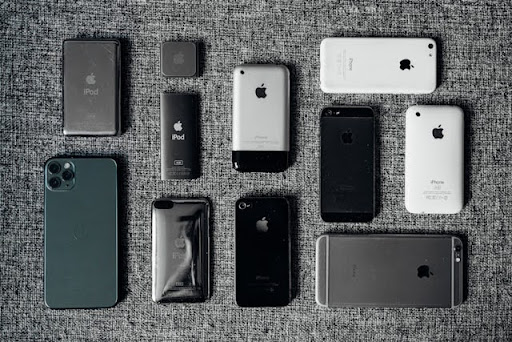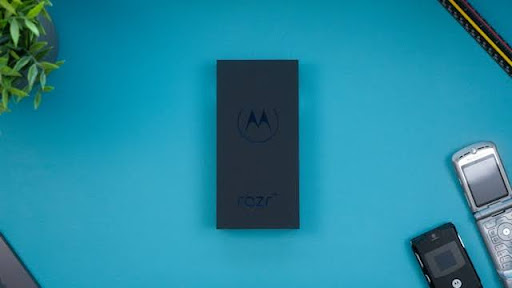Technology
How to Create High-Quality Video Ads Without Professional Editing Skills

Video advertising has become one of the most effective ways for businesses to engage their target audience. However, creating high-quality video ads has often been associated with professional skills, expensive software, and significant time investment. Thankfully, advancements in technology have made it easier for anyone—even those without prior editing experience—to create polished, professional-looking video ads.
With tools like AI-based video ad makers and user-friendly video apps, individuals and businesses can now produce engaging content quickly and affordably. This guide explores how to create high-quality video ads without professional editing skills, detailing the role of AI-powered tools and mobile applications.
1. Understand Your Goals and Target Audience
Before diving into the process of video creation, it is crucial to identify the purpose of your video ad. Ask yourself the following questions:
- What message do I want to convey?
- Who is my target audience?
- On which platform(s) will the ad be displayed?
Having a clear understanding of your goals helps streamline the video-making process. For instance, if your target audience is active on social media platforms like Instagram or TikTok, your video ad should be concise and visually engaging.
2. Use AI Tools to Simplify the Video Creation Process
Creating video ads from scratch no longer requires expertise in editing software. Tools like an AI video ad maker can automate much of the process, allowing you to focus on creativity rather than technical details.
Features of AI Video Ad Makers:
- Text-to-Video Automation: Some platforms allow you to input text or a script, and the tool generates a complete video based on your content.
- Smart Editing Features: With AI, you can apply automatic transitions, animations, and effects without manually tweaking every frame.
- AI Voiceovers: Convert written scripts into natural-sounding voiceovers, saving you from the need to hire voice talent.
By using AI, you can produce polished videos in a fraction of the time it takes with traditional editing software. These tools are ideal for businesses with limited resources or individuals new to video production.
3. Leverage Mobile-Friendly Video Apps
In addition to AI tools, video apps have made video editing accessible to anyone with a smartphone. These apps are particularly useful for on-the-go editing and quick ad creation.
Why Use Video Apps?
- Ease of Use: Most video apps are designed with beginners in mind, featuring drag-and-drop functionality and intuitive interfaces.
- On-the-Go Editing: With video apps, you can create and edit ads directly from your mobile device, making it easy to work on projects anytime, anywhere.
- Customizable Templates: Many apps provide templates tailored for social media platforms, ensuring your ad fits perfectly within the platform’s specifications.
- AI Integration: Some apps incorporate AI to suggest edits, optimize visuals, and adjust the video’s length for better engagement.
For example, you can find advanced video apps that allow you to create visually stunning video ads with minimal effort. These apps often include features like background music selection, one-click filters, and direct sharing options for platforms like Instagram, Facebook, and YouTube.
4. Structure Your Video for Maximum Impact
A high-quality video ad doesn’t just look good—it delivers a compelling message in a structured and engaging way. Follow this formula for a successful video ad:
A. Grab Attention Quickly
The first few seconds of your video are critical for capturing viewers’ attention. Use bold visuals, engaging text, or an intriguing question to hook your audience immediately. For example:
- Use large, readable text to highlight a problem your product solves.
- Incorporate dynamic animations or transitions to keep viewers engaged.
B. Highlight the Key Message
Keep your message clear and concise. AI tools like an AI video ad maker can help you add overlays or animations that emphasize the most important aspects of your message.
C. End with a Strong Call-to-Action (CTA)
Your CTA should clearly instruct viewers on what to do next, whether it’s visiting your website, downloading an app, or making a purchase. AI-powered tools often allow you to insert clickable CTAs, making it easier for your audience to take action immediately.
5. Choose the Right Visuals and Music
The visual and audio elements of your video ad play a crucial role in its overall quality. Here are some tips to ensure your ad looks and sounds professional:
Visuals:
- Use high-quality images or video clips that are relevant to your product or service. Many AI tools and video apps offer built-in libraries of royalty-free assets.
- Maintain consistency in your branding by using your brand colors, fonts, and logos.
Music:
- Select background music that aligns with the tone of your message. For example, upbeat music works well for ads promoting fun or energetic products, while softer music suits emotional or heartfelt campaigns.
- Most AI video makers and video apps offer curated music tracks that are copyright-free and ready to use.
6. Optimize Your Video for Different Platforms
Each platform has unique specifications and audience behaviors. Optimizing your video ad ensures it performs well across different channels:
- Aspect Ratios: For Instagram Stories, use vertical (9:16) videos. For YouTube, use horizontal (16:9) videos.
- Length: Keep social media ads short—15-30 seconds is ideal. Longer ads may work better on platforms like YouTube.
- Subtitles: Many users watch videos without sound, so adding subtitles ensures your message is still delivered effectively.
AI-based tools and mobile-friendly video apps can automatically adjust the aspect ratio, length, and format of your video, making it suitable for multiple platforms.
7. Test and Improve Your Video Ads
Once your video ad is created, testing it is essential to ensure it resonates with your audience. Use the following steps to refine your ads:
- Analyze Performance Metrics: Track metrics like click-through rates, engagement, and conversions to see how your ad performs.
- A/B Testing: Create multiple versions of your ad with slight variations (e.g., different CTAs or visuals) and test them to identify which version performs best.
- Iterate and Improve: Use the data you gather to refine your future video ads, making them more impactful over time.
Conclusion
Creating high-quality video ads without professional editing skills is easier than ever, thanks to tools like AI-based video makers and mobile-friendly video apps. By leveraging these technologies, you can produce visually appealing, engaging, and impactful ads quickly and affordably.
Start by identifying your goals and using intuitive tools such as an AI video ad maker to automate the technical aspects of video creation. Combine these with feature-rich video apps to make on-the-go edits and customize your ads for different platforms.
By following the steps outlined above, you can create professional-quality video ads that capture attention, communicate your message effectively, and drive results—without needing extensive editing skills or a large budget.
Technology
Best Smartphones in 2025: Features, Prices & Reviews

The mobile industry has evolved rapidly, and the best smartphones in 2025 showcase just how far technology has come. With advanced processors, AI-enhanced photography, foldable screens, and impressive battery life, choosing the right smartphone is more exciting—and more confusing—than ever. In this guide, we explore the top-rated models of the year, breaking down their key features, pricing, and reviews to help you find the best fit.
What Defines the Best Smartphones in 2025?
The best smartphones in 2025 are defined by performance, design, camera innovation, battery life, and software updates. Consumers now expect high-refresh displays, ultra-fast charging, and smart AI capabilities integrated seamlessly into the user experience.
Top 10 Best Smartphones in 2025
Here are the standout models this year that dominate the market and win user trust.
1. Apple iPhone 17 Pro Max
Apple’s flagship leads with its A19 Bionic chip, titanium build, and AI photo processor. It features a 6.9-inch OLED display, 48MP quad camera, and satellite emergency connectivity.
- Price: $1,299
- Pros: Best-in-class performance, cinematic video
- Cons: Expensive, no USB-C accessories included
2. Samsung Galaxy Z Fold 6

A foldable powerhouse, the Z Fold 6 offers multitasking on a 7.6-inch inner screen and an S-Pen-compatible cover display.
- Price: $1,799
- Pros: Foldable display, great multitasking
- Cons: Still pricey, bulky when folded
3. Google Pixel 9 Pro
The Pixel 9 Pro continues Google’s legacy with its G4 chip and unmatched computational photography. Its Magic Editor and call screening features stand out.
- Price: $999
- Pros: Excellent camera, clean software
- Cons: Limited availability in some regions
4. OnePlus 13 Pro
OnePlus brings flagship quality with a Snapdragon 8 Gen 4 chipset, 120Hz LTPO AMOLED, and 100W fast charging.
- Price: $849
- Pros: Ultra-fast charging, smooth UI
- Cons: Camera lags behind others
5. Xiaomi 15 Ultra
Xiaomi’s top-tier phone flaunts a Leica-branded camera setup, advanced periscope zoom, and HyperOS optimizations.
- Price: $949
- Pros: Premium camera, affordable flagship
- Cons: Heavier than competitors
6. Samsung Galaxy S25 Ultra
With a 200MP primary sensor, Snapdragon 8 Gen 4 chip, and S-Pen integration, the S25 Ultra is Samsung’s photography king.
- Price: $1,299
- Pros: High-res zoom, long battery life
- Cons: Large and heavy
7. ASUS ROG Phone 9
Perfect for gamers, the ROG Phone 9 features a 165Hz display, gaming triggers, and active cooling.
- Price: $1,099
- Pros: Best gaming performance
- Cons: Not suitable for general users
8. Sony Xperia 1 VI
Sony continues to appeal to creators with manual photography controls and a 4K OLED screen.
- Price: $1,199
- Pros: Pro-grade camera tools
- Cons: Niche appeal
9. Motorola Edge+ (2025)

Motorola returns to the premium space with a refined design, solid specs, and clean Android experience.
- Price: $799
- Pros: Great value, beautiful screen
- Cons: Updates may be slow
10. Nothing Phone (3)
Carl Pei’s Nothing Phone (3) delivers a unique transparent design, clean UI, and respectable mid-range performance.
- Price: $599
- Pros: Stylish, affordable
- Cons: Mid-tier camera
Best Smartphones in 2025 Under $500
Not everyone needs a flagship. The best smartphones in 2025 under $500 include options from Poco, Realme, and Samsung’s A-series. These models offer excellent performance for everyday use.
- Poco F6: Best for gaming
- Realme GT Neo 6 SE: Balanced specs
- Samsung Galaxy A55: Reliable and sleek
Foldables and Flips—A Major Trend
Foldables are no longer futuristic—they’re practical. Phones like the Galaxy Z Flip 6 and Huawei Mate X5 lead this category.
- Galaxy Z Flip 6: Compact clamshell style
- Huawei Mate X5: Book-style design with flagship hardware
AI in the Best Smartphones in 2025
AI is now deeply embedded. From voice assistants that write emails to photo editors that reframe shots, AI makes using smartphones more productive.
- Google Pixel 9 Pro’s Magic Editor
- Samsung’s Galaxy AI for real-time translation
- Apple’s Smart Siri upgrades
Battery Life and Charging Speed

The best smartphones in 2025 now offer up to 2-day battery life. Fast charging is standard, with some reaching 100% in 20 minutes.
- OnePlus 13 Pro: 100W wired charging
- Xiaomi 15 Ultra: 120W HyperCharge
- iPhone 17 Pro Max: Efficient standby time
Best Mobile Phones in 2025 for Photography
Cameras are the main reason many upgrade. The best smartphones in 2025 take studio-quality shots using multiple lenses and AI enhancement.
- iPhone 17 Pro Max: Cinematic mode and low light
- Galaxy S25 Ultra: 200MP zoom magic
- Pixel 9 Pro: Real Tone and best skin tone accuracy
Software and Longevity
Software support is vital. Long-term updates help phones age gracefully.
- Samsung promises 7 years of updates
- Google guarantees 7 years for Pixel 9
- Apple typically supports devices for 6+ years
User Reviews of the Best Smartphones in 2025
Here’s what actual users are saying:
- “The Pixel 9 Pro’s camera is insane! I don’t even need my DSLR anymore.”
- “The Fold 6 changed how I work—having two screens is super helpful.”
- “I upgraded to the iPhone 17 Pro Max and the battery life alone is worth it.”
Prices of the Best Smartphones in 2025
Here’s a quick look at current flagship prices:
| Smartphone | Price (USD) |
| iPhone 17 Pro Max | $1,299 |
| Galaxy Z Fold 6 | $1,799 |
| Google Pixel 9 Pro | $999 |
| OnePlus 13 Pro | $849 |
| Xiaomi 15 Ultra | $949 |
| Galaxy S25 Ultra | $1,299 |
| ASUS ROG Phone 9 | $1,099 |
| Sony Xperia 1 VI | $1,199 |
| Motorola Edge+ (2025) | $799 |
| Nothing Phone (3) | $599 |
Buying Guide—How to Choose the Best Smartphone in 2025
When picking the best smartphone in 2025, consider these factors:
- Camera quality: For photography enthusiasts
- Display type: AMOLED vs OLED vs Foldable
- Battery life: Minimum of 4500mAh is ideal
- Software support: Prefer brands offering 5+ years of updates
- Storage: Opt for 256GB or higher for longevity
FAQs About the Best Smartphones in 2025
Q1: What is the best smartphone in 2025 overall?
The iPhone 17 Pro Max and Galaxy S25 Ultra are top contenders due to their all-round performance and features.
Q2: Are foldable phones durable now?
Yes, brands like Samsung and Huawei have greatly improved hinge durability and water resistance in their 2025 models.
Q3: Which smartphone has the best camera in 2025?
The Galaxy S25 Ultra leads in zoom capabilities, while the Pixel 9 Pro wins in color accuracy and skin tones.
Q4: Which is the best smartphone under $500 in 2025?
The Poco F6 and Realme GT Neo 6 SE offer excellent performance and specs for the price.
Q5: How many years of updates can I expect?
Major brands now offer 5 to 7 years of software and security updates, ensuring your phone stays current.
Conclusion
Choosing among the best smartphones in 2025 depends on your needs—whether it’s camera performance, design, gaming, or battery life. This year’s offerings are more diverse than ever, and there’s something for everyone, from premium flagships to budget gems. Whether you lean toward Apple’s polished ecosystem or Android’s wide variety, the best mobile phones in 2025 offer excellent value and innovation.
Be sure to match your budget and expectations with the model that suits your lifestyle best. With the right choice, you’ll enjoy not just a phone, but a true companion for work, creativity, and play.
Technology
Importance of Digital Label Solutions in Smart Warehouses

The logistics and warehousing sectors are undergoing a complete transformation due to automation, increased data accessibility, and digitization. With their use of Smart Inventory Systems, traditional paper labeling approaches have become obsolete. Digital label solutions have become critical necessities. These include custom display technology which, particularly from seasoned LCD display manufacturers, enables smarter, faster, and more accurate warehouse processing and operations.
This article discusses the growing significance of electronic label systems and their relationship with intelligent warehousing. It is written for B2B executives who oversee logistics, warehouse management, or provide industrial supply chain solutions.
Moving from Paper to Digital in Today’s Warehouses
The straightforward approach of using paper systems has served organizations for decades, but it is high time they recognized the shortcomings of this approach in today’s demanding logistics world. The labels get damaged, handwritten updates result in wrong information, and manual re-labeling delays processes.* Instant modifies
- Streamlined Control
- Integrated automation
- Direct links with warehouse management systems (WMS)
They assist in real-time data updates for equipment, mitigating human error when checking information, thus allowing for a more productive workflow and overall increased efficiency within the workplace.
In terms of industry and warehouse management technologies, Advanced Robotics was also able to develop interchangeable laser alphanumeric/cyclic type Industrial Labeling Systems for Advanced Robotics Industrial machinery and basic frameworks, allowing adaptability to proprietary devices.
Optimized Workforce Allocation
When it comes to a warehouse, even a few seconds can make a world of difference as speed improves processes exponentially, making more be done. In this context, a few of the more sophisticated advantages that already optimized warehouses are now benefiting from using are also adopting robotic systems along with their more traditional automation systems to ease labor movements, meaning they have to do far fewer manual movements to achieve results.
Digital labels are just one means that can help with real-time control.
Real-time information about everything allows modern engines and information to not have real-time computations on charts, which enable the dramatic advancement of many systems that were adopted years ago.
Improved Speed of Order Processing
Because of the automations put in place, the warehouse workers are able to process orders much faster with navigational instructions provided on digital labels in the form of an order number, pick corridors, and even packaging directions. This reduction in processing time reduces both training and error related expenses.
Precision in Accuracy Augments Compliance
A labeling mistake in the warehouse could result in the wrong shipment or returns, both of which are costly and could lead to financial penalization through regulations. An incorrect or outdated label is just one of the many reasons an industry can face non-compliance issues. It is ensured with the help of digital labels which can make instant modifications on all aspects of the products’ information—barcodes, QR codes, serialized data—so they’re updated and compliant with industry standards.
Responsiveness and Expansion
Edges of flexibility are sought in smart labeling systems. Labels which are not printed are constantly changing, thus and need immediate replacement. Moving from one Storage region to another is more than crucial for a business in need of adapting to increased seasonal demand due to business expansion.
Role of LCD Display Manufacturers in Digital Labels
The success of digital labels rely greatly on the equipment used including the technology which ensures the screens are operational. This Passaniti mentions: LCD display manufacturers are accountable for providing the warehouse workers with the display which acts as the digital interface where the applied scm softwares is executed.
These displays must meet the following criteria:
- Rugged to endure physical stress, temperature fluctuation, and dust contamination.
- Energy-efficient during prolonged use, particularly when operating on a battery.
- High-contrast and legible, even in low-light conditions.
- Customizable allowing enterprises to select formats that best match the shelving, bins, or pallets.
With the rise in demand for personalized solutions, many producers of LCDs have started offering custom LCD screens tailored to address specific logistical challenges. These include small monochrome displays for bin-level data all the way to large format LCDs designed for dock scheduling, zone management, or designated product scanning areas.
Custom LCD screens together with lcd display manufacturers continue to drive innovation, adding value to multifunctional displays by designating distinct layouts and purposes for each warehouse, thus tailoring them to designated workflows.
Uses of Digital Label Technology in Smart Warehousing
The new-age smart warehouses do not rely on a single technology, but rather a set of integrated solutions working synergistically. Digital labels can be applied in various warehouse processes, adding value in terms of visibility and measuring efficiency.
Digital Labeling of Bins and Shelves
These are the most basic yet bear the most usefulness. Digital labels can display item description, SKU, quantities, and even picking instructions. Integrated LEDs or other indicators can assist a worker to promptly identify the correct item, further reducing search time.
ID a Pallet
Large LCD’s can show data like the load contents, handling instructions, destination, and more. This data can be displayed in real-time on the pallet. Such enables effortless dock management and cross docking enablement.
Displays for Zones and Aisles
Stretch and ultra-wide LCDs can be positioned at the ends of aisles or workstations for a more hands-on approach to guiding workers. Workers can be instructed on exactly what tasks need to be done as well as the entire workflow. All of this can be real-time communication based on ongoing warehouse activity.
Labeling Cold Storage
The use of barcode labels and paper tend to degrade due to moisture or extreme conditions. Unlike paper, these have the ability to withstand tagging under refrigerated or frozen regions. Freeze-rated designs enable label digitization even in cold conditions.
Safety and Compliance Instruction Alerts
Use of compliance checks and maintenance of machinery in charge free zones can be displayed. This along with alerting workers to hazards boosts safety while allowing for audits to be conducted loss unprepared.
Future Prospects of Industrial Supply
As supply becomes more agile and interconnected, we expect the need for markings digitally to increase. The use of IoT elements and AI logistics will drive warehouses to increase automation and data precision.As the needs grow, LCD display manufacturers are working on developing screens with the following capabilities:
- Wireless communication interfaces (Wi-Fi, BLE, NFC)
- Interactive touchscreen features
- E-ink substitutes for ultra-low power usage functions
- Flexible display formats for non-standard shapes like curves
Looking ahead, we may integrate RFID, voice assistants, or even autonomous sensor inputs for further real-time interaction with future digital label systems. With acceleration in these directions, digital labels will act as the “face” of smart warehousing, interacting with humans and machines.
For B2B leaders, adopting such an infrastructure of digital labeling will serve strategically by reducing operational costs while improving customer service and inventory control.
Conclusion
Enhanced digital label solutions constitute the backbone of warehouse functionalities in modern businesses. With almost real-time data updates, reduction in human errors, streamlined logistics, and transformed inventory management, companies are able to fulfill customer orders with precision. Leading this transformation, in partnership with business, are lcd display manufacturers who customize digital labels with their innovative screen technologies.
Incorporating practices such as digital labeling to any business, be it a single warehouse or a global distribution network, marks a move towards smarter, more robust logistics. Efficient operations begin with the right tools, and custom lcd screens and lcd display manufacturers provide the necessary technology to ensure your systems are scalable and efficient.
Embracing new technology such as digital display technologies provides businesses with the speed and accuracy required to keep moving forward.
ALSO READ: 5 Signs Your Business Needs a Custom Website Upgrade
Technology
5 Signs Your Business Needs a Custom Website Upgrade

Your website should be your best salesperson, but right now, it’s probably your weakest link.
While you’ve been focused on growing your business, your template-based site has been holding you back with technical limitations you didn’t even know existed.
That cookie-cutter website builder you used three years ago can’t keep up with today’s demands.
Slow performance frustrates visitors. Security vulnerabilities put your data at risk. Mobile users get a subpar experience. And worst of all, you’re losing potential customers at every click.
Luckily, custom-coded websites solve what templates never can.
Imgine a website that works for your business instead of against it, loading instantly, showcasing your brand perfectly, and converting visitors effortlessly.
In this article, a seasoned web development company reveals the 5 critical warning signs that your current website costs you money, and how a custom solution can fix them for good.
1. Your Website Loads Too Slowly
3 secnds.
That’s all it takes for 53% of visitors to abandon your site.
If yours takes longer, you’re not just testing patience but burning revenue.
Template sites are dragged with bloated code, unnecessary plugins, and unoptimized scripts. Every extra second of load time slashes conversions by 7%.
The hidden cost? You’re paying for this. Ads are driving traffic to a slow site. SEO rankings are tanking because Google penalizes sluggish performance.
Customers assume you’re unprofessional before they even see your offer.
Custom code eliminates this friction. No junk code. No conflicting plugins. Just lean, purpose-built architecture that loads in under 1.5 seconds—the benchmark for top-performing sites.
2. You Can’t Add or Customize Key Features
Your business is unique. Your website shouldn’t force you into generic solutions.
That booking system you need? The template doesn’t support it.
Those custom filters for your products? The platform says no.
Every workaround costs you:
-
Time wasted on plugins that half-work.
-
Money spent on “solutions” that create new problems.
-
Opportunities lost because your site can’t adapt.
We see it all the time. A restaurant needing timed reservation releases. A retailer requiring dynamic inventory displays. Template limitations make these simple needs impossible.
Custom code changes everything. Your features. Your rules. No compromises.
3. Your Branding Feels Generic
Your website looks like every competitor’s. Same template. Same overused fonts. Same predictable layout. Cookie-cutter designs erase what makes your brand special.
Visitors judge instantly. Premium products appear cheap. Expert services look amateur. You blend in when you should dominate.
Template limitations create these problems:
-
Brand colors that never quite match.
-
Layouts that fight your content.
-
Unwanted elements you can’t remove.
Custom design changes everything:
-
Every detail reflects your authentic brand.
-
Layouts built for your content.
-
Strategic visuals that command attention.
When your website matches your brand’s quality, customers notice. They stay longer. They trust more. They choose you over competitors.
Your brand isn’t generic. Why should your website be?
4. You’re Paying for Plugins You Don’t Need
Your website is bleeding money every month on unnecessary plugins. That $29/month SEO tool? The $99/year premium slider? They add up fast, often for features you barely use.
Template sites create this problem. They promise “easy customization” but force you to buy plugins for basic functionality. Worse, these plugins:
-
Slow down your site with bloated code
-
Create security vulnerabilities
-
Require constant updates
Most businesses use less than 30% of their plugins’ full capabilities. You’re paying for features you don’t need just to get the few you actually use.
Custom development cuts this waste entirely. Instead of:
-
Paying monthly for 10 plugins.
-
You get one clean, efficient codebase.
The math is simple:
-
$50/month in plugins = $600/year
After two years? You’ve spent more than a custom solution would’ve cost, with none of the performance benefits.
Your website shouldn’t be a subscription trap. With custom code, you pay for exactly what you need, nothing more.
5. Your Site Doesn’t Scale with Your Business
Your business is growing, but your website can’t keep up.
That template that worked perfectly last year now struggles with your current traffic…
Pages load more slowly. New features require clunky workarounds. During peak periods, your site might even crash completely.
Template-based websites hit invisible ceilings. They’re designed for simplicity, not growth. When you need to:
-
Add new product categories
-
Handle seasonal traffic spikes
-
Integrate with advanced business systems
The limitations become painfully clear. Performance suffers. Customers encounter errors. You lose sales exactly when you should be making them.
Custom-built sites solve this permanently. They’re engineered from the start to:
-
Maintain speed regardless of content volume
-
Easily accommodate new functionality
-
Scale seamlessly with your traffic
The alternative? Watching competitors capture opportunities while you wrestle with technical limitations. Spending on temporary fixes instead of investing in growth. Losing customers during your most crucial moments.
Your website should be your most reliable business asset. With proper architecture, it grows precisely when and how you need it to, no compromises, no surprises.
The Competitive Edge of Custom Development
In today’s digital landscape, your website isn’t just an online presence; it’s your competitive advantage.
While competitors rely on restrictive templates and patchwork plugins, custom development gives you the freedom to innovate.
Faster load times, seamless scalability, and tailored features not only improve performance but also elevate the entire customer experience.
A custom-built site adapts to your business, not the other way around. No more workarounds. No more compromises. Just a website designed to convert, built to grow, and engineered to outperform.
The question isn’t whether you can afford custom development, it’s whether you can afford to fall behind without it.
-

 Sports5 months ago
Sports5 months agoThe Ultimate Guide to Ski and Snowboard Equipment, Ski Equipment Rental, and Snowboard Equipment Rental
-

 General7 months ago
General7 months agoStart-094: Unlocking Its Secrets and Understanding Its Power
-

 Entertainment8 months ago
Entertainment8 months agoHulu Error Code Rununk13: A Complete Guide
-

 Entertainment6 months ago
Entertainment6 months agoSoaper.tv: A Comprehensive Guide to Your Streaming Companion
-

 Games5 months ago
Games5 months agoPizza Edition Games: The Ultimate Guide to Fun and Flavor
-

 Uncategorized5 months ago
Uncategorized5 months agoOceanofPDF: Free eBooks Source or Copyright Violation?
-

 Technology8 months ago
Technology8 months agoWhy SBCodez is the Go-To Resource for Aspiring Coders
-

 Apps8 months ago
Apps8 months agoWeb & Store Synergy: The Ultimate Guide to Blogging for E-commerce
